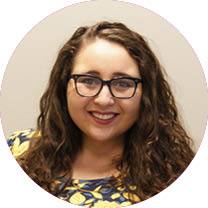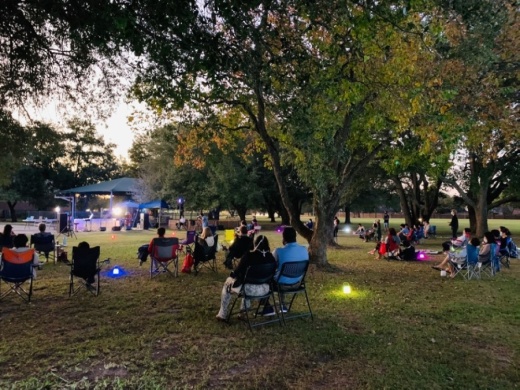When coronavirus was initially dubbed a pandemic in March, churches, temples, synagogues and mosques initially focused their efforts on the most basic needs: how to maintain services and a congregation in a time where gatherings were impossible. Despite the impossibility of the task, faith leaders around the community turned to flexible and creative solutions to continue their services.
“It’s hard to make real plans because things change every day,” Richard White, senior pastor at Katy First United Methodist Church said.
‘Do no harm’
White said his church has implemented temperature checks as a safety measure in addition to buying specialized equipment designed to kill airborne contaminants. While mask-wearing has become politicized, his congregation is trying to simplify the message, he said.
“In our Methodist traditions, we talk about doing no harm,” White said. “That’s our first rule: ‘Do no harm.’ Then, ‘Do all the good that you can.’ The last one is, ‘Stay in love with God.’ Those are the three Methodist rules. We see the wearing of a mask as being an expression of loving God and loving our neighbor.”
In addition to roping off pews and temperature checks, White’s services have even made their way to FM radio for churchgoers who cannot attend safely in person.
With safety front of mind, Dr. Jacqueline Minter, the director of Fort Bend County Health and Human Services, recommended the public remain vigilant during their celebrations this month.
“I would remind everyone of the [Centers for Disease Control and Prevention] recommendations for mitigating transmission of COVID-19,” Minter said in an email. “Avoid large and mass gatherings. Physically distance if you must go out. Wear a face covering. Practice good hand hygiene and strongly consider alternatives to in-person gatherings.”
Life Church youth pastor Daniel Rivera said attendance at his church has been cut in half since the pandemic began. Despite the drop in attendance, Rivera cited church as a necessary escape for some of the younger members of the congregation.
“Some of them when they’re here, especially if they’re still doing online school, virtual school, this becomes a place for them to resocialize again and be around some peers,” Rivera said.
Overcoming pandemic obstacles
Some places of faith have faced more challenges than others, such as the Tree of Life Messianic Congregation. Before the pandemic, it worked with a local Methodist church to rent a space on Saturdays, but when that church shut down during the pandemic, they were left without a location to practice their faith. Rabbi Steve Sheek turned to livestreaming, making his sermons available online to his congregation, which continued the virtual practice into July before taking advantage of lowered restrictions and moving services outside.
“We started meeting at the VFW Pavilion every Saturday morning,” Sheek said. “It’s open air, and it’s a wide enough area that people could social distance if they wished.”
In addition to lacking a permanent location, Tree of Life also saw a drop in attendance. It correlated with a decrease in donations, making it more difficult to maintain financial obligations.
“With people not coming, our finances took a big hit,” Sheek said. “I quit taking any kind of salary just so that we could maintain our own obligations. We support the number of things, like orphanages in Israel ... but we were able to keep up with all of our obligations.”
While most congregations have seen changes in attendance and donations, not every place of worship has faced these challenges. Lake Church, a Korean Presbyterian church guided by lead pastor Ryan Kim, is maintaining about the same rate of attendance as it did before the pandemic began with a congregation of 50.
“For now, we have not planned anything differently,” Kim said. “It is a luxury that we can enjoy while bigger churches cannot do it.”
As for the upcoming holiday, Minter said the traditions and celebrations hold their own health value but must be approached creatively during a pandemic.
“The inability to continue these [holiday] practices in time-honored traditional fashion can provide another area of disappointment to those already struggling with mental health challenges,” Minter said. “However, as our local religious leaders have pointed out, this experience has allowed their membership to be more creative in expressing their faith and in caring for others.”
Another hurdle bigger churches face is in the way they worship. With hymns and songs as a focal point in many services, many places of worship are having to reconsider the tradition. Due to its respiratory nature, Minter said “it is best to engage in singing with members of your immediate household only.”
While singing is a major obstacle for larger congregations, Kim said the most difficult element for his congregation has been the inability to be physically close with his parishioners.
“We need physical touch to grow as individuals and as a congregation,” Kim said. “Virtual meetings are great but not the same as physical meetings. It’s been hard to have fellowship ever since the beginning of the pandemic, such as eating food together; it is an essential core activity for church.”
Kim is not the only faith leader in Katy who cited the lack of fellowship as one of the more difficult issues to overcome. Kim, Sheek, Rivera and White agree: While seats can be distanced, faces can be covered, hands can be washed, and temperatures can be checked, there is no simple solution for the lack of emotional support physical fellowship offers.
“Trying to keep everybody connected and feeling like they were part of the body has been the biggest challenge,” Sheek said. “We had other stuff—you know, the finances and all of that kind of stuff. Well, those are just things. Things just have a way of working themselves out, but the relationships aren’t as simple.”
Despite all of the hurdles, Katy faith leaders have managed to find silver linings in even the darkest of circumstances.
“St. Peter’s has been extremely supportive of us,” said Sheek. “They couldn’t have been any nicer to us. I was starting to look around, seeing if I could find someplace to worship you know outside of St. Peter's, but then right at the last minute, they called me and said, ‘Hey, we’re starting up next week. Are you ready?’ Man, I was more than ready. I can’t say enough good things nice about Pat Sparks, their senior pastor and his whole staff. Everybody there is just really, really good to us, and we appreciate that.”





